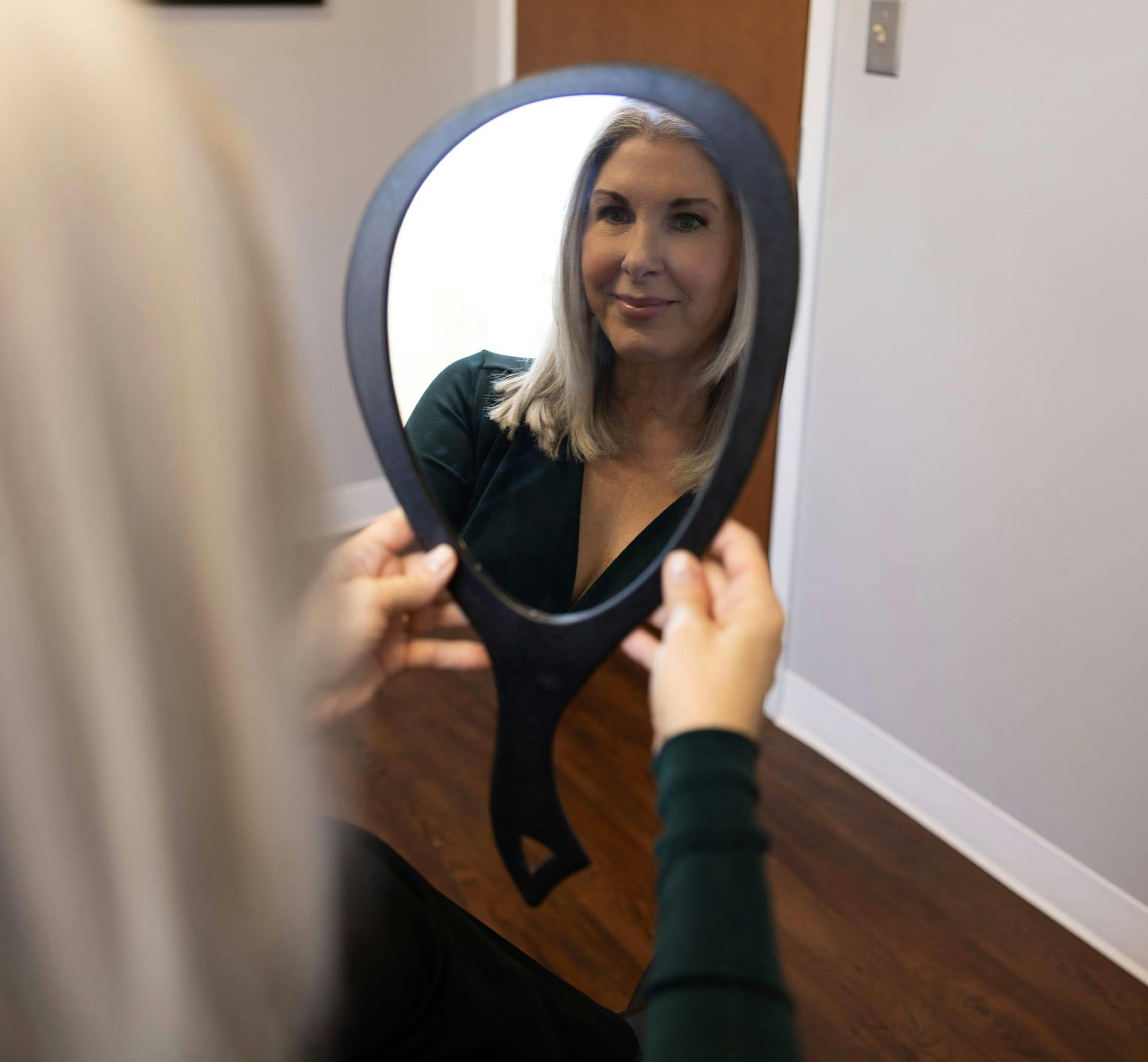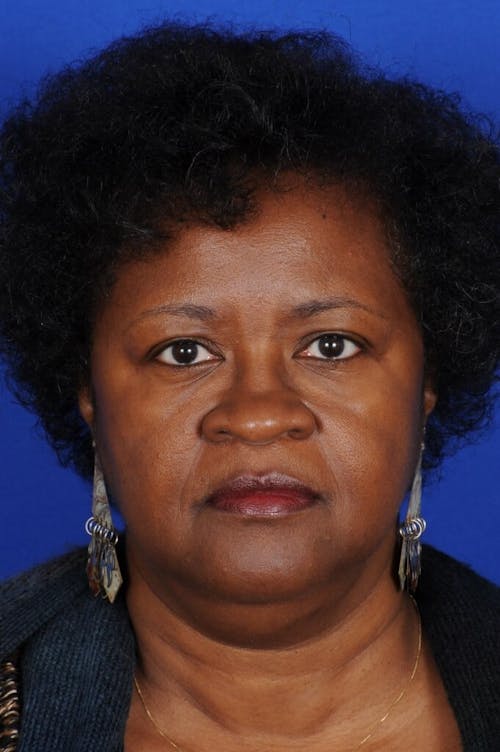A septal perforation is a hole in the nasal septum. This causes airflow through the nasal cavity to crisscross through the hole in the septum, causing turbulence, which adds drag to the air as it flows through the nose, causing the sensation of obstruction.

Overview
Nasal septal perforation repair is ultra-specialized, requiring very advanced knowledge of rhinoplasty techniques, tissue advancement, and grafting. Placing sutures deep in the nose is extremely delicate and requires supreme concentration and patience. Midlothian, VA, facial plastic surgeon Matthew Bridges, MD, FACS, trained with a world-renowned expert in rhinoplasty and septal perforations. He has extensive experience and a special interest in the repair of septal perforations.


Surgical Technique
Open Perforation Surgery
Septal perforations can be approached via an open rhinoplasty technique, which places a small incision in the skin between the nostrils. This exposes the nasal cartilage and allows wide access to the septum for repair. The disadvantage of this approach is the recovery, which can be somewhat longer than the closed approach. Also, there may be more of a chance of causing external cosmetic changes to the nose due to the more extensive dissection involved.
Closed Perforation Surgery
Endonasal, or "closed," septal perforation repair, involves making incisions only inside the nose. The term "closed" is a misnomer since the nose/septum is certainly opened during surgery, but only with internal incisions. Dr. Bridges does all of his septal perforation repairs using this technique. This procedure has significantly less external swelling/bruising than the "open" approach. Also, the risk of unintended cosmetic change is minimized. Performing closed septal perforation repair is highly technical and requires very advanced surgical skills. Only surgeons with this skill, such as Dr. Bridges, should even attempt this approach.
I LOVE what the microneedling has done for my skin - the tone and texture is unbelievable. Thanks for introducing me to Circadia, too - Love all the products you recommended. Am...
Dear Dr. Bridges, Thank you so much for your amazing work on my nose! I'm so thrilled with how it looks, and I couldn't be happier! I hope you have a great rest of your summer.
Dr Bridges takes the time to know his patients conditions and explains what must be done for treatment in user friendly language. staff is proficient and seems to genuinely care...
Dr. Bridges performed very complex surgery on my nose to repair a large loss to my left nostril due to cancer. At all times he ensured that I understood what the procedure would...
Extremely happy with the outcome of my nose surgery. I had sleep apnea....I was a true mouth breather. My nasal passages were thin slits! Dr Bridges gave me new cartilage ...
Dr. Bridges is an outstanding doctor. His easygoing personality and high level of expertise really set him apart from other doctors. He is a master of his craft and I know when ...
Dr Bridges is wonderful, so relatable and made me feel comfortable from the start. Thorough assessment that led to a wonderful result. Was sent to him for my deviated sept...
I had a most wonderful experience at this office. The staff are great and support the patient before/after surgery. I would tell everyone to come to this office. Dr. Bridges exp...
Truly an amazing experience. Franki explained the laser procedure with me and made me feel extremely comfortable. I would highly recommend commonwealth and Franki for any services!
Dr. Bridges is fantastic. I always wanted a rhinoplasty but I waited to find the right surgeon. He's patient, listens, and delivers excellent results. He also fixed my dev...
Super friendly staff. Dr Bridges did the impossible. I had gone to several consultations with plastic surgeons in the Richmond area to fix a surgery I had on my nose about...
I got a septo/rhinoplasty with Dr. Bridges and had an amazing experience! The process was seamless from start to finish. I felt prepared for surgery and had a quick and ea...
Dr. Bridges reminds me of the old time family doctors…empathetic, competent, efficient. I wish all of my doctors were like him. Additionally, he has surrounded hims...
Dr. Bridges performed my rhinoplasty in June 2024 and I couldn’t be happier with the results. I wanted a rhinoplasty for years but kept putting it off. My tip really...
Super friendly staff. Dr Bridges did the impossible. I had gone to several consultations with plastic surgeons in the Richmond area to fix a surgery I had on my nose about...
Dr Bridges performed a Lipoma removal procedure on my forehead and I am truly satisfied. He is an excellent physician. His nurse is awesome as well. I was extremely nervou...
Getting rhinoplasty to correct my larger nose has been a lifelong dream of mine, but the idea of doing it has always been scary/intimidating. Dr. Bridges and his team made...
I feel so grateful to have met Franki Lambiotte, the aesthetician at Dr. Bridges' practice!
I'd been interested in laser hair removal/reduction for...
My family have been patients at this practice for over 10 years. Franki Lambiotte has been wonderful with her services. My parents gave me laser hair removal packages as a...
Dr. Bridges is an amazing facial plastic surgeon, and we're so lucky to have him here in RVA. Amazing bedside manner, and actually listens to what you want to work with yo...
I’m blown away, pun intended. From the moment Dr. Shaia recommended Bridges, I have felt that my level of care was akin to what the president receives. The expertise...
Dr. Bridges is fantastic. I always wanted a rhinoplasty but I waited to find the right surgeon. He's patient, listens, and delivers excellent results. He also fixed my dev...
I had rhinoplasty by Dr. Bridges on November 20th 2019, almost 2 months ago. I had a great experience as a whole. Dr. Bridges was easy to talk to and his staff were all ve...
I was lucky enough to be one of the first of Franki’s clients to try the laser hair removal, Bare HR by Sciton, and loved the results on my legs and armpits. Franki ...
Franki has been my aesthetician for several years. I visit her every 2 or 3 months for either a hydrafacial or dermaplane facial. More recently, Franki recommended that I ...
In my teens, a mishap left my nose with a slight deviation and fractured. As the years passed, my nasal deviation worsened, turning my nose into something akin to a wilted...
For the past few years I’ve been watching the lines on my face getting deeper and jowls forming. It was when I started to see my neck sagging that it was time to get...

During/After Surgery
Septal perforation surgery is an outpatient procedure performed under general anesthesia. The approach used during the surgery varies for each patient, depending on the severity of the perforation. However, the actual technique used to close the hole is similar in both approaches (closed vs. open). The tissue surrounding the perforation is carefully elevated on both sides to separate the flaps and allow the hole to be closed in each flap independently. This is done with careful suturing inside the nose. An "interposition" tissue graft is placed between the flaps, and the flaps are then sewn back together, incorporating the tissue. Various tissue sources are available for grafting, including tissue from behind the ear or even from the leg. Dr. Bridges typically uses acellular dermis, or Alloderm, which is prepared donor tissue that does not require another incision for harvesting. This tissue works very well. After surgery, thin silicone sheets are kept in place on both sides of the septum for 3-4 weeks. This allows the tissue to completely heal without drying out and is very important in the overall process. The silicone sheets are typically well-tolerated by patients. With the closed approach, there is usually little to no external swelling or bruising, and external taping/splinting is not necessary. Overall, the procedure is not particularly painful.
Septal Perforation Surgery FAQs
Does septal perforation surgery work?
Should I have open or closed surgery for septal perforation?
Does insurance cover the procedure?
When can I exercise?
Does septal perforation surgery work?
The success rate of septal perforation surgery depends on the severity of the perforation. About 90 percent of patients who undergo septal perforation surgery (both open and closed techniques) experience a successful procedure with minimal risks and side effects.
Should I have open or closed surgery for septal perforation?
The technique used during the procedure depends on the size and severity of the perforation. Most patients with small or medium-sized perforations have closed septal perforation surgery, while patients with larger perforations may require open surgery. During the initial consultation, the surgeon evaluates the perforation to determine which technique would be the most successful.
Does insurance cover the procedure?
Some insurance companies may cover the cost of surgery because of the medical effect on patients suffering from septal perforation. Patients are encouraged to speak with an insurance representative before surgery to find out what will be covered by their insurance policy.
When can I exercise?
Most patients can return to routine exercise 3-4 weeks after surgery. However, you should be extremely careful not to hit or injure your nose during exercise.





